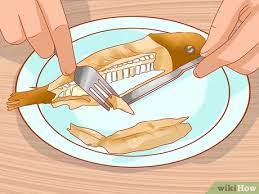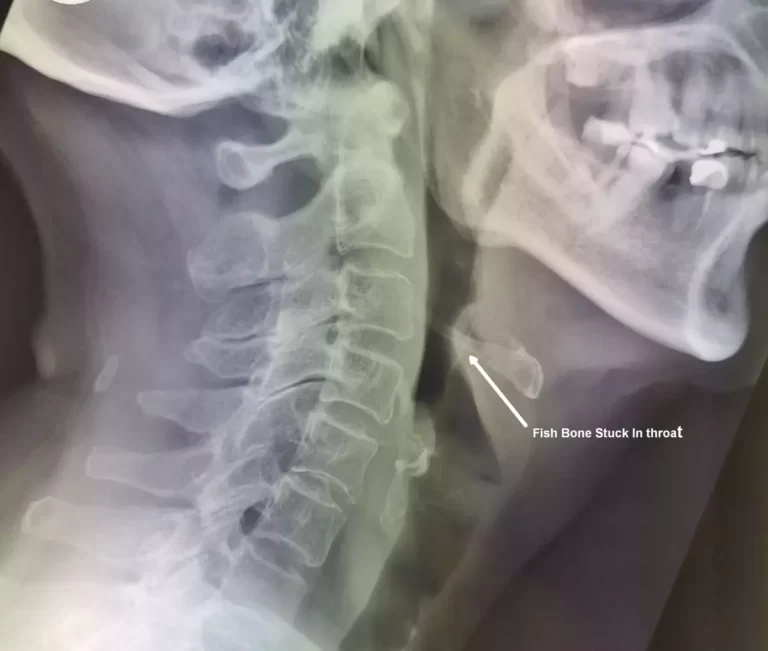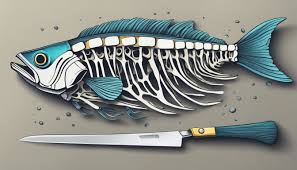Fish bones, also known as fish thorns, can be a surprising and unwelcome addition to your meal. While they are a natural part of fish anatomy, they can be a hazard if accidentally left behind while preparing or eating fish. If you’ve ever found yourself dealing with a fish thorn caught in your food, don’t panic—there are several methods to safely remove it. In this guide, we’ll explore effective ways to handle the situation, from detecting the thorn to preventing future occurrences.
Identifying the Fish Thorn in Your Meal

The first step in dealing with a fish thorn is identifying it. Fish thorns, or small bones, can sometimes be tricky to spot because they’re often tiny and delicate. They usually have a sharp, pointed shape that can be uncomfortable if they’re in your food. The most common places to find them are in fish fillets, especially those from larger fish like salmon, trout, or bass.
The best way to identify a fish thorn is to carefully inspect the fish. If you notice any tiny, hard pieces in your meal that seem out of place, you’ve likely encountered a fish thorn. These bones are usually translucent or white in color, and they can sometimes be hidden beneath the surface of the fish. If you’re eating a cooked fish dish, check for bones by gently pulling apart the flesh. You can also run your fingers along the surface to feel for any small, sharp protrusions.
If you’ve already bitten into a fishbone and it’s causing discomfort, it’s important to remain calm. Don’t try to swallow or chew further, as this may push the thorn deeper into your throat. Instead, gently spit out the food and assess the situation. Make sure you’ve removed any visible pieces of bone from your mouth.
Step-by-Step Guide to Safely Remove a Fish Thorn
Once you’ve identified a fish thorn in your food, the next step is to remove it safely. Here are the most effective methods to handle the situation:
Use Tweezers for Larger Thorns
If the fish thorn is large enough to be seen with the naked eye, you can use a pair of clean tweezers to remove it. Gently grip the bone with the tweezers and pull it out in the direction of the bone’s natural growth. Be careful not to break the bone or push it further in while removing it.
Use Your Fingers for Smaller Thorns
For smaller fish thorns that are less visible or delicate, you can often remove them using your fingers. Gently pinch the bone with your fingers, taking care not to tear the flesh of the fish. If you’re unsure whether you’ve removed the thorn completely, run your fingers along the fish flesh once more to check.
Check the Fish Again
After removing the visible fish thorn, it’s always a good idea to inspect the rest of the fish. Check for any other bones or thorns that may have been missed. Fish fillets, especially from larger fish, can contain multiple thorns, so make sure you’ve checked the entire portion thoroughly.
Rinse the Fish
If you’re dealing with a piece of fish that has multiple thorns, rinsing it gently under cold water can help dislodge any remaining bones. Run your hands over the fillet to feel for any hidden thorns, and remove them one by one. If you’ve been eating a dish with multiple pieces of fish, be sure to check each piece individually.
What to Do If You Accidentally Swallow a Fish Thorn

Accidentally swallowing a fish thorn can be a frightening experience, but in most cases, it isn’t something to panic over. If the thorn is small and doesn’t get stuck in your throat, it may pass through your digestive system without causing harm. However, if you feel any discomfort or sharpness in your throat, it’s important to act quickly.
Drink Water
One of the first things you should do if you’ve swallowed a fishtail is to drink plenty of water. This can help wash down the bone and ease the discomfort. You might also try swallowing a small piece of bread or a banana, as these can help cushion the thorn and push it down your throat more easily.
Coughing
Coughing can sometimes help dislodge a small bone that’s stuck in the throat. If you feel something lodged in your throat, give a few strong coughs to see if the bone will come out. Avoid panicking and stay calm—if the bone doesn’t come out right away, there are other steps you can take.
Seek Medical Attention
If you’re unable to remove the fish thorn yourself or if you experience severe pain or difficulty breathing, it’s important to seek medical attention immediately. A healthcare professional can help safely remove the thorn using specialized tools if necessary. In rare cases, thorns may become lodged in the throat or esophagus, which can lead to complications if not addressed promptly.
Preventing Fish Thorns from Getting into Your Food

While it’s impossible to entirely eliminate the risk of fish thorns appearing in your meals, there are several preventive measures you can take to minimize the likelihood of encountering them in the first place. Here are a few helpful tips to keep in mind when preparing and eating fish:
Remove Bones During Preparation
One of the best ways to prevent fish thorns from getting into your food is to remove them during the preparation process. Before cooking fish, inspect the fillets carefully and remove any visible bones using tweezers or pliers. You can also use a fish bone extractor tool for larger fish to ensure that all thorns are removed.
Use Boneless Fish
If you’re particularly sensitive to the presence of fish thorns, you might want to opt for boneless fish fillets when cooking or ordering seafood. Many restaurants and grocery stores offer boneless fillets that have already been thoroughly checked for bones, making them a convenient option for those who prefer to avoid thorns altogether.
Consider Filleting Fish Properly
If you’re preparing whole fish, make sure you’re filleting it properly to ensure that all bones are removed. You can use a sharp filleting knife to carefully separate the fish from its bones. Take your time and inspect the fillets thoroughly to make sure no bones are left behind.
Use a Fish Bone Strainer for Soups and Stews
If you’re preparing a fish soup or stew, you can use a fish bone strainer to catch any small bones during cooking. This tool helps keep bones from mixing into the dish and allows you to safely discard any thorns before serving. You can also strain the liquid through a fine sieve to catch any tiny bones that may have broken off during cooking.
Dealing with a fish thorn in your food may seem like a frustrating experience, but with the right approach, it’s easy to handle. By identifying and safely removing the thorn, and using some preventive measures during preparation, you can enjoy your fish dishes without worry. If you do happen to swallow a fish thorn, stay calm and use the appropriate techniques to address the situation. Always remember that, in most cases, a fish thorn can be dealt with easily and will not cause harm in the long run.

